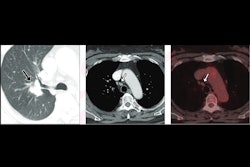Interventional radiologists who excel in communication, positive outcomes, and cultural competence receive high patient ratings, according to a study presented at the recent RSNA meeting.
The finding is from an analysis of 1,964 five-star online reviews and 139 less than five-star reviews, with the latter revealing that shortcomings in procedural outcomes, patient education, and bedside manner contribute to negative feedback, noted lead author Esha Chadha, a medical student at Ohio State University in Columbus, and colleagues.
“In the setting of limited patient satisfaction data in interventional radiology, this work investigated predictors of high patient satisfaction scores to provide insights for interventionalists for optimal healthcare delivery,” the group wrote in the study abstract.
With the focus on patient satisfaction increasing, more patients are using online platforms such as US News Health, Share Care, Vitals, WebMD, and Google Reviews for rating doctor experiences. These platforms provide insights into a physician care quality, including interventional radiologists, by capturing positive and negative feedback.
Seeking insights for interventional radiologists, the group analyzed reviews on 300 randomly selected physicians from the Society of Interventional Radiology’s website listing. Variables included the rating, wait time, insurance accepted, patient satisfaction, cultural competency, procedural outcomes, and physician demographics. Additional data on reasons for dissatisfaction, such as procedural outcomes, bedside manner, and patient education, were also collected.
Out of 1,964 five-star reviews, patients who underwent procedures accounted for 52% (2,061), while nonprocedural patients contributed to 48% (1,903) of the reviews. Conversely, 139 less than five-star reviews generated 241 negative comments, with procedural patients providing 72% (174) of the comments and nonprocedural patients contributing 28% (63).
The analysis revealed a significant association, indicating that patient type, whether procedural or nonprocedural, affects review ratings, the researchers noted. Positive clinical comments mainly focused on medical explanations, while negative feedback often highlighted procedural outcomes (78%) and inadequate patient education (13%).
In addition, positive nonclinical remarks lauded good bedside manner (82%) and culturally sensitive care (78%), while negative comments frequently criticized poor bedside manner (92%) and long wait times (59%), the researchers reported.
“Addressing these aspects can enhance patient experience and overall healthcare quality in interventional radiology,” the group concluded.



















